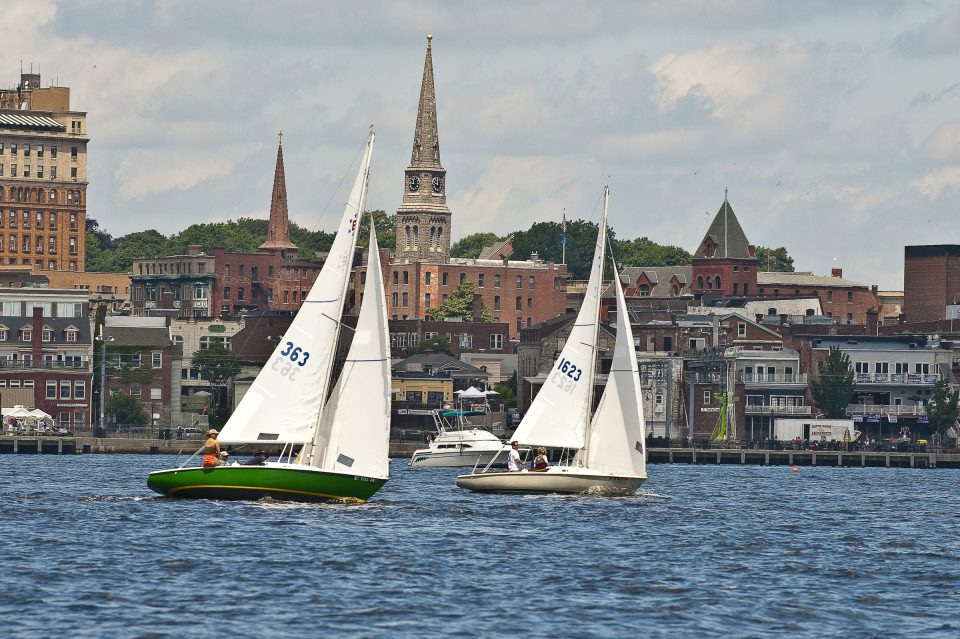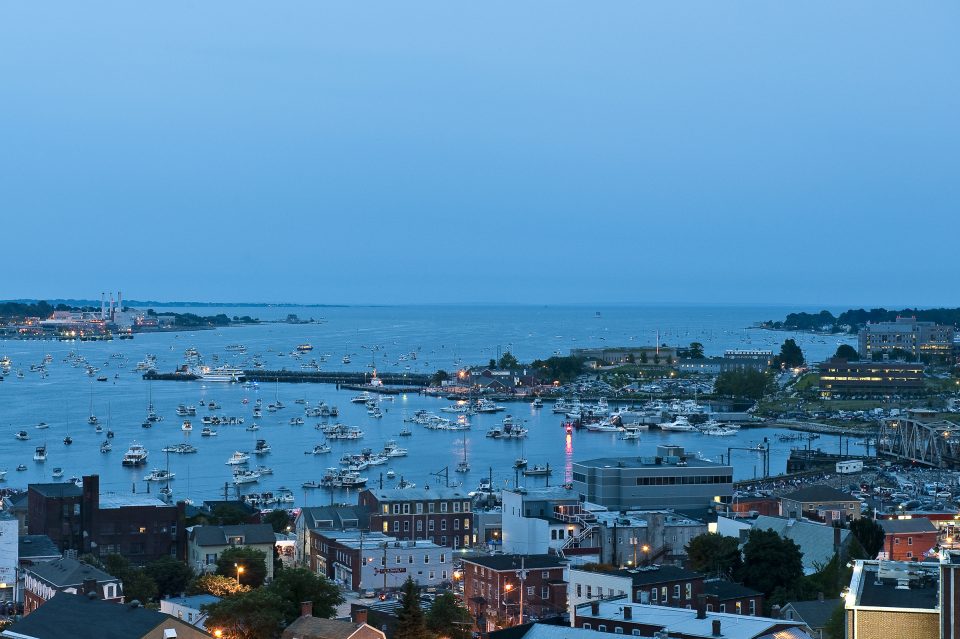A New Chapter for the Whaling City
By David Tranchida

Fishing and boating have been a part of the culture and business landscape for generations in New London, CT. The Port of New London, at the mouth of the Thames River, is a quick run out to several reefs in the area where the waters of Connecticut, New York, and Rhode Island merge.
Charter captains and recreational anglers can spread out across any number of reefs in the area based on weather, tide, season and where the crowd isn’t.
One of the most popular spots is the Race, a short trip from the Thames to the western end of Fishers Island. The Race is a turbulent swath between Valiant Rock and the island. Long Island Sound, Block Island Sound, and Fishers Island Sound all come together at the tip of the island, and depths range from just over 300 feet to about 15 feet over the ledge that serves as the foundation for Race Rock Light.
Further east along Fishers Island Sound is Wicopesset Passage, Latimer Reef, Sugar Reef, and finally Watch Hill Reef at the western tip of Rhode Island and Block Island Sound. In between are enough clumps, small reefs, and plain old rocks to ruin the day for a fleet of beginners.
There are plenty of wrecks in the area as well. In the 19th century and early 20th century, the area was transited by schooners delivery goods and steamers delivering wealthy passengers from Philadelphia and New York to the hotels and inns of Watch Hill overlooking Block Island Sound.
The Port of New London, a natural, deep-water harbor with easy access and located between New York and Boston, was a busy port, filled with schooners, fishing vessels and, on special occasions such as the Harvard-Yale regatta, private yachts.
Much has changed, but New London Mayor Michael Passero has a vision that recreates that busy port scene.
With navigable water right up to the shoreline along New London’s Waterfront Park, Passero looks out and sees piers filled with yachts and 70-foot sport fishers. He sees crews and guests coming ashore to sample the city’s eclectic food scene and to purchase provisions, from fuel and groceries to floral arrangements and libations. As a native of the city’s shoreline and an avid boater since he was a kid, Passero knows of the opportunities his shoreline represents.
“It’s getting harder and harder to find space at Sag and in Newport for the bigger boats and yachts,” Passero said. “I see New London as a service port. We can bring a fuel truck down to the piers. Charter yachts can stop here to exchange crews – we’ve got the transportation center right on the waterfront with Amtrak and bus service.”

Passero has watched all of this happen in other ports while vacationing with his wife, Mary, and their two children through the years. As a lifelong sailor, family vacations meant cruising along the coast and stopping at various ports. He knows of the difficulties reserving dock space and moorings in harbors on Long Island and Nantucket because he’s done it. He knows how difficult it can be to get around those places once you arrive.
New London offers the ideal alternative, or at least a respite from those more crowded yachting destinations.
The City’s waterfront, home to the third largest whaling fleet in the world in the mid-19th century, offers City Pier, Custom House Pier, and Amistad Pier along the Waterfront Park promenade where concerts and other events are held from Spring through Autumn. The Thames River Heritage Park Water Taxi offers tours of historic sites along both shores of the harbor.
And New London’s historic downtown retail and commercial center is a short walk from the waterfront and includes the Custom House Maritime Museum, Garde Arts Center, and other venues that are now part of the recently enacted Cultural District.
While he holds true to his vision of a busy destination and provisioning port for recreational boaters and yachters along the East Coast, Passero also is under no illusions about his harbor.
The Thames River was always a working port, back to the days of whaling and fishing schooners. It is home to General Dynamics-Electric Boat on the Groton shoreline, where nuclear submarines are built for the U.S. Navy. New London’s shoreline is home to the U.S. Coast Guard Port of New London, Cross Sound Ferry terminal, the historic 1887 Union Railroad Station on Amtrak’s Northeast Corridor, and the Admiral Harold E. Shear State Pier, which is being upgraded after decades of underutilization to become a hub for offshore wind farms along the Eastern Seaboard and a wider variety of traditional cargo.
Even these more industrial aspects of the harbor offer something for visitors – unique experiences. Where else can you see nuclear submarines under construction and then take a short cruise up the river to see the U.S. Naval Submarine Base and Coast Guard Academy. The Academy’s tall ship sail training vessel Eagle also docks in New London.
“Yachting is an industry that New London should get into,” Passero says after running through all the facilities and amenities the City offers and continues to create as its leaders work to bring the Whaling City’s next chapter to life. “Servicing yachts can create jobs here. We’ve always had a working waterfront, and we still do. This would be an addition to our maritime economy.”

Passero sees tourism, and maritime tourism in particular, as an important driver of business for the City’s independent shops and entertainment venues as well.
“Every one of those yachts is like a small business and they need supplies and services,” Passero said. “They’d love to get a delivery of fresh flowers for the salon from Thames River Greenery, or some wine and cheese from Thames River Wine and Spirits. We’re right on the way from New York and Fairfield County and ports farther south as they cruise to Newport and Martha’s Vineyard and Nantucket and Maine.”
Perhaps it’s only fitting that the Mayor of the Whaling City is a lifelong sailor who wants to get the most out of his waterfront and enjoy it as if he were a visitor. He’s owned race boats in the past, but as the family grew – and as he prepared to teach his granddaughter how to sail — he needed more comfortable boats. He now owns a Nonsuch 33, ‘Born to Run,’ a play on the best point of sail for a Nonsuch.
“I grew up on the river and we were always in boats. I can’t even remember when I learned to sail – we were just always in a boat. My friends’ families belonged to the Thames Yacht Club, so I got to tag along. We learned by trial and error I guess,” he said. “We fished and sailed and messed around on the beach across the street.”
Now, as a member of Thames Yacht Club himself, with a history of racing wins and cruising destinations under his belt, Passero is eager to serve as host for his fellow boaters and the opportunities they can bring to his fellow residents.